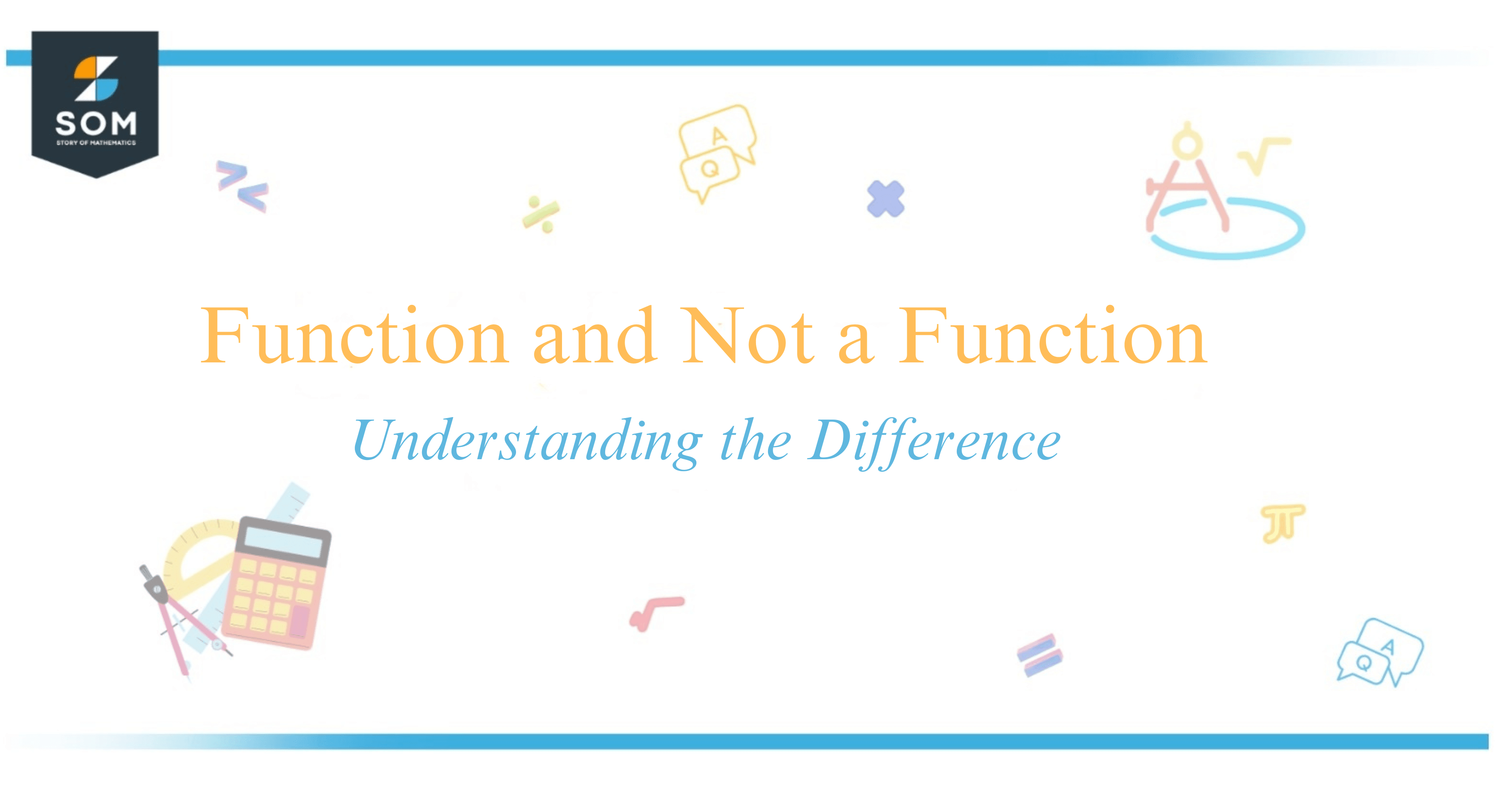JUMP TO TOPIC

A function is a fundamental concept in mathematics that I find crucial in the realm of algebra and beyond. It pertains to a specific type of relation that pairs each element in a set, known as the domain, with exactly one element in another set, known as the range.
In more formal terms, for every input value, there is only one output value, which can be expressed as ( y = f(x) ).

Learning to differentiate between a function and not a function is an essential skill in mathematics. When teaching this concept, I emphasize that a simple way to identify a function is by using the vertical line test on its graph.
If a vertical line touches the graph at more than one point, then the graph does not represent a function. This is because it shows that a single input (( x )) is mapped to more than one output (( y )), which violates the basic definition of a function.
Engaging with this idea lays the groundwork for understanding more complex concepts in calculus and other advanced mathematical fields.
Identifying Function not a Function
In my exploration of mathematics, I’ve come to understand a function as a special kind of relation where every input from the domain (a set of all possible inputs) is connected to exactly one output.
This unique pairing means for every x (input), there is only one y (output).
A relation becomes not a function if a single x value is associated with multiple y values. In such cases, the relation is a set of ordered pairs, where some x values share more than one y.
To illustrate, let’s consider these ordered pairs for relation R:
| x (input) | y (output) |
|---|---|
| 1 | 2 |
| 2 | 3 |
| 1 | 4 |
Since the input value 1 has two different outputs (2 and 4), this R is not a function.
For a visual check, one can use the vertical line test on a coordinate plane. If any vertical line intersects the graph of the relation at more than one point, the relation is not a function. Here’s an example of a graph on a coordinate plane that demonstrates a function vs. not a function:
| Graph | Function? |
|---|---|
| Non-intersecting | Yes |
| Multiple Intersects | No |
In summary, identifying whether a relation is a function or not a function is crucial to understanding the relationship between variables. Always remember for a function, each input value is like a personal call to just one output value.
Visual and Tabular Representation of Functions
When I study mathematics, I often come across the concept of functions. A function represents a relationship between two variables, where each input is connected to exactly one output.

To understand functions better, I use two main forms of representation: visual and tabular. The visual representation usually involves graphs on a coordinate plane, while the tabular form uses lists of values structured in vertical tables.
For visual representation, I find that plotting a function on a graph provides an immediate and intuitive understanding of its behavior. On the coordinate plane, the horizontal axis typically represents the inputs, while the vertical axis represents the outputs.
A simple yet powerful test to check if a graph represents a function is the vertical line test. If a vertical line cuts the graph at most once at any position, then it depicts a function.
Tabular representation might not be as visually striking as graphing, but it’s practical for discrete datasets or functions with a finite domain. Here’s how a typical table for a function might look:
| Input (x) | Output (f(x)) |
|---|---|
| 1 | 2 |
| 2 | 4 |
| 3 | 6 |
The table above adheres to the definition of a function, where each input has only one output. It’s also a handy reference to see specific values at a glance without needing to read the details of a graph.
Lastly, for more complex relationships, I use mapping diagrams. These diagrams visually show the link between the inputs and their respective outputs, which can be particularly useful for functions that are difficult to graph or when illustrating a finite number of relations.
Advanced Concepts and Function Operations
In the field of mathematics, especially when dealing with Algebra, we come across various advanced concepts related to functions. A notable operation is function composition, where two functions combine to form a new function. The composition of ( f(x) ) and ( g(x) ) is denoted as $(f \circ g)(x) $ and is defined as ( f(g(x)) ).
The function transformations are fundamental in understanding how functions behave. These transformations include shifts, reflection, and stretching. For example, if I have a function ( f(x) ), a vertical shift upwards by ( k ) units is represented by ( f(x) + k ).
When working with functions, it’s important to recognize properties like domain and range. The domain is the set of all possible input values, while the range is the set of all possible outputs.
| Operation with Functions | Notation | Description |
|---|---|---|
| Addition | ( (f + g)(x) ) | Sum of ( f(x) ) and ( g(x) ) |
| Subtraction | ( (f – g)(x) ) | Difference between ( f(x) ) and ( g(x) ) |
| Multiplication | ( (fg)(x) ) | Product of ( f(x) ) and ( g(x) ) |
| Division | $\frac{f}{g}(x) $ | Quotient of ( f(x) ) over ( g(x) ), where $ g(x) \ne 0 $ |
Conclusion
As we’ve been exploring the concepts of functions and not a function, it’s essential to remember that differentiation lies in the relation between inputs and outputs.
In mathematics, for a relation to be a function, every input must be associated with exactly one output. This means that if we take any input ( x ), there can only be one corresponding output ( y ).
To illustrate, imagine I have a set of numbers that I’m inputting into a machine. If I input the number 2 and get the output 4, then every time I input 2, the output must consistently be 4 to qualify as a function.
If there’s ever a scenario where inputting 2 results in a different output, then what we’re looking at is not a function.
Remember, the test for a relation to be a function is quite simple. If we can draw a vertical line through the graph of the relation and it touches the graph at more than one point at any given time, this relation is not a function. This is often referred to as the vertical line test.
In summary, the core difference between a function and not a function is the uniqueness of outputs for each input within a relation.
If you’d like to deepen your understanding, check out my detailed explanations of functions and my insights on non-functions, where I delve into examples and applications.
